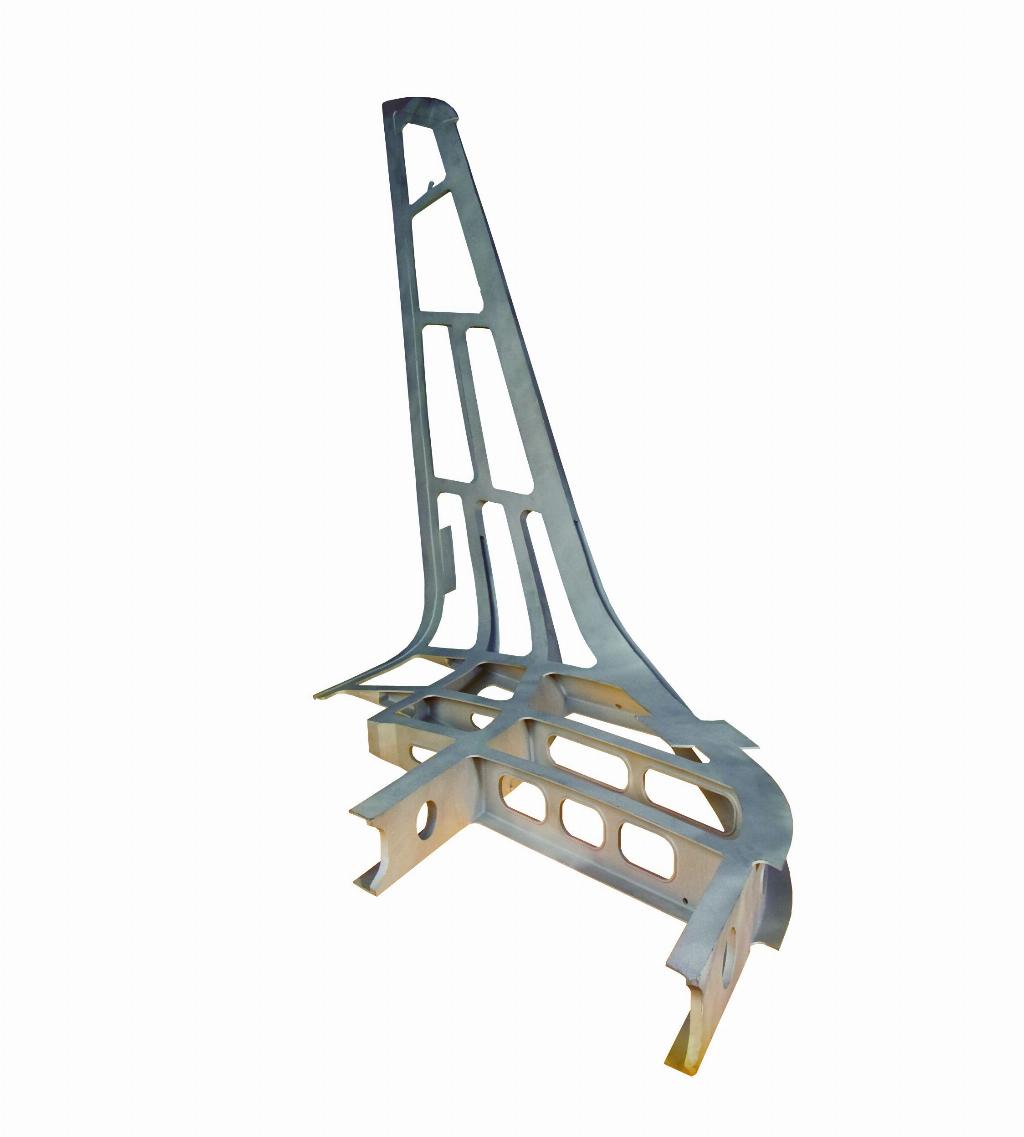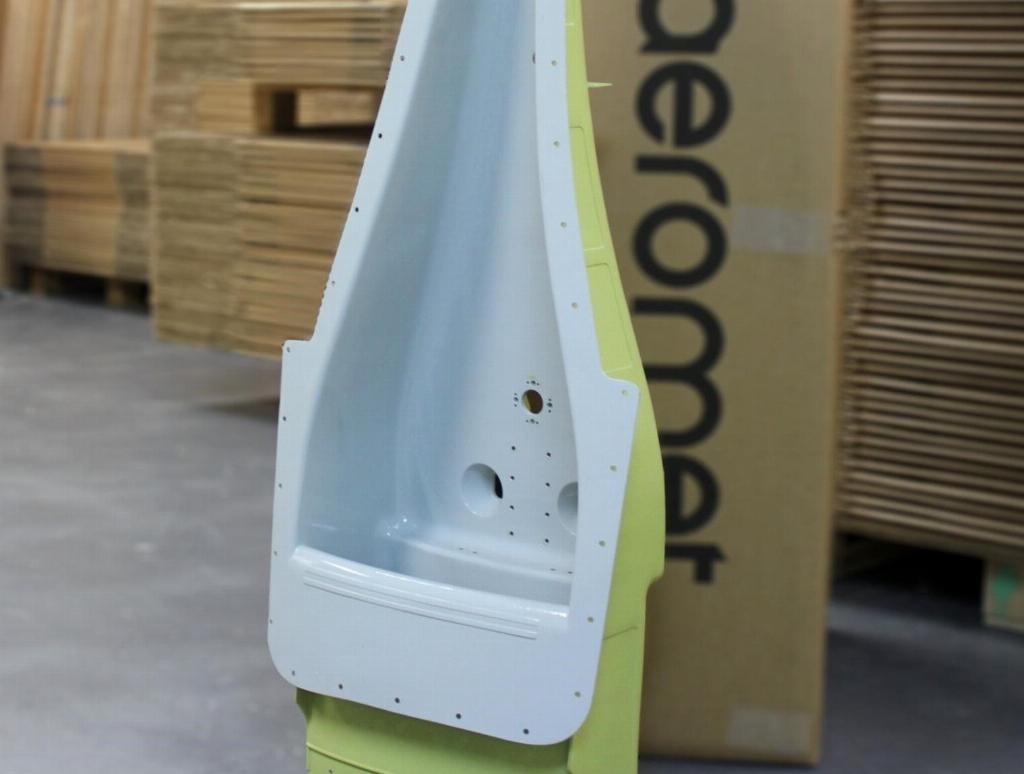Flying with the alloy of the future

The aluminium fightback starts here. Mike Richardson visits Aeromet International’s Sittingbourne, Kent facility to catch up on the latest developments of its ground-breaking A20X aluminium alloy.
Today’s metallurgists constantly strive to discover the right mixture of chemical ingredients to produce an alloy with the kinds of mechanical properties coveted by today’s aerospace designers. Like an ancient alchemist using arcane methods to turn base metal to gold, Aeromet International may well have discovered the proverbial philosopher’s stone of aluminium alloys in the form of its new A20X aluminium-copper alloy for high strength airframe and aero engine components.
Spread over the three UK sites of Sittingbourne, Rochester and Worcester, Aeromet offers a diverse range of capabilities including aluminium and magnesium sand castings, aluminium investment and SOPHIA high property castings. Specialising in supplying a range of cast parts for the aerospace and defence industries, the company recently expanded its Boeing relationship by securing its biggest ever set of orders by being awarded an extension to its existing long-term agreements covering the supply of parts for the Boeing 737, 767 and 777 aircraft. In addition to the contract extension, Aeromet has secured a new contract to supply parts for the Boeing 777X, largest and most efficient twin-engine jet in the world.
“Whilst A20X has been in development for some time it has now become a mature commercial readily available alloy,” begins Aeromet’s business development executive, Adam Lucas. “Boeing has been a customer of our Worcester site for some time. It’s a great relationship but most importantly, when we say we’ve got a great idea that will help them, Boeing are willing to listen because they are very open to ideas.”

Mission accomplished
Aeromet clinched the Boeing deal following a UK suppliers’ trip hosted at the OEM’s Seattle production facilities, Washington State in 2016, which was supported by the UK Government’s Department for International Trade (DIT).
“There have been two trips in the last six months where the DIT has welcomed Aeromet as part of its group of companies that have all got something to offer. Boeing had been interested in A20X for some time, so we’ve been working with them to obtain their material specifications and we’re now in development for production parts - it’s a very exciting time for the company.”
Aeromet submitted its material for Boeing approval at the end of last year and by early 2017 received its formal approval to cast A20X before entering immediately into a development project with a part for a Boeing 777X.
“This year, we plan to complete the development project and productionise Boeing’s specific parts,” says Aeromet’s general manager of Kent operations, Mike Twyman. “Our Rochester facility conducted an industrialisation process on A20X, spending the year developing the material from a laboratory-based material into a mass-produced one, ready to fly on aircraft. We established all our standard foundry processes in relation to migrating from an aluminium ingot to actual cast part.
“We’re very excited to have our A20X alloy on a commercial aircraft programme. When I came onboard at Sittingbourne, we looked at establishing a single hierarchy across the two Kent manufacturing sites. We’ve managed to conduct all of the industrialisation processes for the alloy at Rochester and copied that methodology over to the Sittingbourne plant to prove that we can transfer it to the Sittingbourne factory in a different casting environment. The Boeing order has given us the volume to completely re-imagine the way we manufacture castings and secure an additional 15-year lease on the Sittingbourne factory.
“Hopefully, it’s the start of a long and fruitful trading relationship with Boeing where we will expand the size of this business here. We’re looking to increase the size of this business by 150% which in real terms means the doubling of the size of the shopfloor and our labour force over a period of four years. Our business plan shows really strong growth and modernisation of the factory environment, plus ongoing recruitment.”

Material gains
Engineers have preferred to design parts from wrought materials over the last few years because previous aluminium alloy variants couldn’t quite offer them the broad range of aerospace-specific mechanical properties they desired, forcing them to go down the machine from solid (MFS) route. However, A20X is reversing this trend because it offers the potential of significant cost reductions when compared to MFS methodologies.
“Casting technology has moved on dramatically in the last 10 years and the range of parts where the sweet spot of casting techniques satisfy both weight and cost saving requirements is expanding all the time,” states Lucas. “Another key factor in terms of our R&D project work concerns simulation. Here, we use Magmasoft’s modelling software which allows us to simulate the flow of metal into the mould and experiment with running/feeding systems where previously there would have been some trial and error. It gives customers the knowledge that when we say we will deliver on-time, we can say it with a higher degree of confidence.”
According to Twyman, one of the problems Aeromet traditionally had was in competing with alternative raw material finish-machining options, such as machining a 7075 range of raw billets on a CNC machining centre.
“With a standard suite of aerospace alloys, i.e. C355 or A357, we can cast them in a variety of wonderful shapes, but they don’t possess the desired tensile properties the aerospace industry requires in higher end applications,” he explains. “The real difference now is that A20X is castable at elevated mechanical properties and its homogeneous grain structure offers the necessary properties of elongation and ultimate tensile strength.
“MFS methodologies took a 4mm cast wall thickness and turned it into a 1.5mm machined wall thickness, which removed a lot of weight from the aircraft. The higher strengths of the original MFS billet parts allowed designers to create parts with thinner wall sections that with a standard suite of cast alloys we weren’t capable of competing with. A20X enables the design of a cast part that is now a better proposition than a MFS fabricated part.”
Lucas believes that A20X will also go on to offer an alternative to titanium use on aircraft. That material’s properties have granted it exclusivity in the aerospace industry, but it looks set to come up against some stiff competition from A20X.
“Titanium has been used in certain applications because designers cannot get the properties required from anything else, whereas A20X can now offer them similar properties,” he explains. “Their part will do the same job, but using an aluminium alloy instead of titanium so they can enjoy huge cost reduction benefits. We’re even suggesting that certain thin wall carbon fibre composite parts can be replaced. If a designer can swap a part that’s going to weigh the same but save money, they can then spend it on reducing weight elsewhere.”

Onwards and upwards
By the time of the Paris Airshow, Aeromet will have a new website, plus a new specific A20X website. The company licences out its use of A20X to a group of 10 competitor foundries around the world from which it earns royalties. Indeed, A20X has become so significant to Aeromet that it will eventually be established as its own separate business entity in terms of managing the foundry licensees, its ongoing forays into additive manufacturing powder metallurgy, and future plate and sheet product developments.
“The Boeing contract is fantastic news for all the people that work here because it establishes a really exciting building block for our future,” Lucas concludes.
“Our Worcester site is participating in the Government’s Sharing in Growth (SiG) scheme and internally we’re taking a lot of that learning and applying it at our two Kent sites. We’ve also been involved in two NATEP projects as part of the Aerospace Growth Partnership (AGP). Aeromet represents a great success story to come out of this. You have to work hard and be determined to succeed, but if you take advantage of everything on offer you can achieve something quite significant. Aeromet has blazed a trail for others to follow. It shows what is possible when companies want to drive themselves forward and become world leaders in their field; this is how you do it.”













